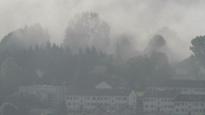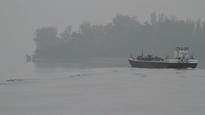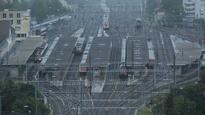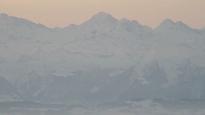GROSSE KLEINE WELT
Robert Walser wrote many CV’s – for employers, editors and so on – but we know little about himself. I started from a CV written by Walser, to which I added a line, and I looked for traces of Walser, or rather the absence of them, in the city and region where he was born. I’ve started a sort of antiportrait of Walser, inspired by his novels and other texts. In the film I included two short texts, spoken off-screen – one at the beginning, one at the end. For Grosse kleine Welt, the basic thought was to remain faithful to Walser’s literature. But I did not want to illustrate this or that text, Walser was just my guide. All of the shots in Grosse kleine Welt were made outside, with a long-focus lens and often from a vantage point. The camera is directed to the land, the city, the houses… Man is present everywhere but there is no individual to be seen. No one specifically, anyway, except for a group of people now and then.
In my notebooks I copy phrases, paragraphs or entire pages out of books that I am reading. I also note things I hear on the radio, or sometimes on a train. I often browse through these notebooks and observe what I have copied. Let’s say that these notes give me ideas of atmospheres, of temporalities. I do not want to stage a specific lecture, but rather let a lecture guide me towards a specific kind of work. For Grosse kleine Welt, I wanted to make a portrait of Walser, to touch upon something of his literature through imagery, but not to illustrate his life or a specific text. I don’t use literature as a scenario, but it does help me find what I am looking for. It turns my search into words.
Generally, I am interested in small differences and subtle resemblances. What happens in between perspectives in a video, in between photos, that is what matters. What counts for me is that which we do not see, what we cannot convey in images. I am interested in the in-between. I am looking for an interplay of rhythm, light shifts, slippage. And yes, that is a way to make the movement of time visible.
(Marie José Burki)





- Formaat DIGITAL FILE(DIGITAL FILE)
- Kleursysteem PAL
- Kleur col.
- Jaar 2013
- Duur 00:33:15
- Taalinfo
Gesproken: German, French
-
Kunstenaars